How many types of edible seaweed have you eaten, and how many can you name?
Chances are, if you’ve been to a Japanese restaurant, you’ve probably encountered nori wrapped around your sushi, wakame in your miso soup, maybe a small side dish of su-no-mono (cold dish in vinegar) with cucumbers and mozuku, and the dashi (broth) in your soup may have been taken from kombu…this is just to say, how much of an integral part of Japanese cuisine edible seaweed is.
In this article, we will explore the most common types of Japanese seaweeds and how they are commonly eaten.
Table of Contents
The Japanese have been eating seaweed since ancient times
In Japan, a country surrounded by the sea, seaweed has been an important part of the diet since ancient times. Particularly rich in minerals such as iron, calcium, magnesium, phosphorus, potassium and iodine as well as fiber, the Japanese have been eating seaweed for a long time, and it is still a very important part of Japanese cuisine today.
Harvesting seaweed, particularly wakame, has been part of an ancient shinto ritual that is called “Mekari Shinji” in northern Kyushu and San-in areas, and records show that it was an annual rite already back in the year 710, so we have been eating seaweed for at least 1300 years, but probably longer.
The most common types of seaweeds in Japanese cuisine
Seaweed can be categorized into green algae, brown algae and red algae. The most commonly eaten seaweeds are brown algae and includes kombu, wakame, mekabu, hijiki and mozuku. Green algae include umibudou and aonori, while red algae include nori and the colorful tosakanori, often used to add color to a seaweed salad or to sashimi.
Now let’s jump into the different types of seaweed eaten in Japanese cuisine. Below you can find the eight most common types of seaweed that are eaten in Japan.
Nori
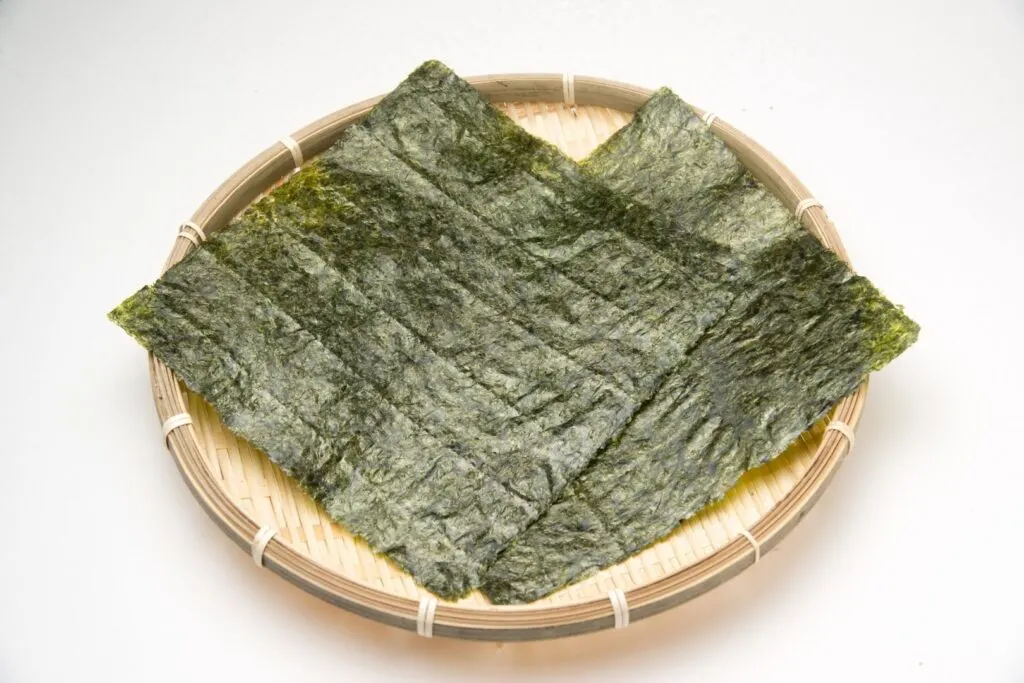
Type of Japanese seaweed: Nori
How it’s sold: In dry, flat sheets, either unsalted or as Ajitsuke (flavored) Nori.
How it’s prepared: Either seared to crisp it up or as is.
How it’s eaten: Wrapped around sushi, onigiri, cut thinly as garnish.
Aonori
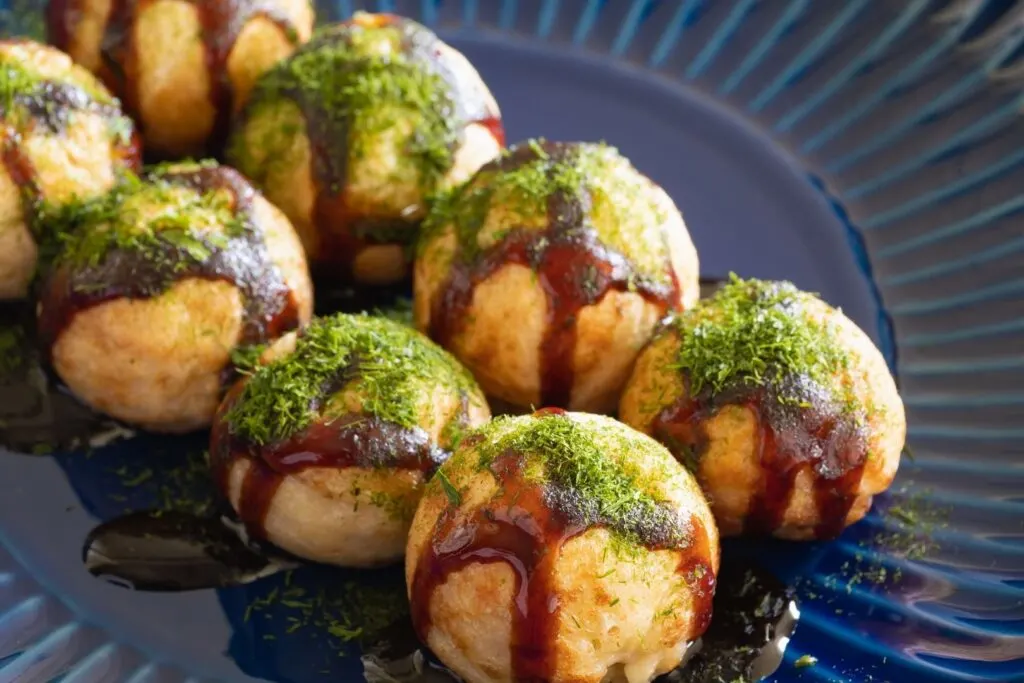
Type of Japanese seaweed: Aonori
How it’s sold: In dry powder form.
How it’s prepared: Used straight out of the packaging.
How it’s eaten: Sprinkled onto okonomiyaki, takoyaki etc.
Kombu
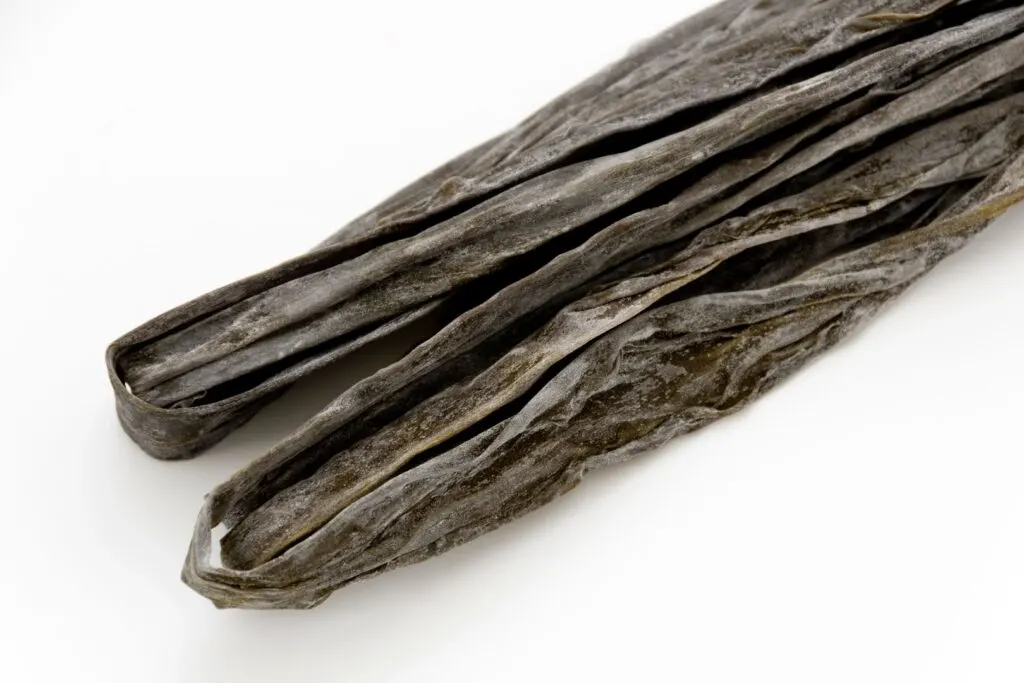
Type of Japanese seaweed: Kombu, mostly harvested in Hokkaido
How it’s sold: Dried, unless you are buying shio-kombu (salted kombu) which is used as a condiment and is usually sold semi-dried, or you are buying kombu no tsukudani, kombu simmered in soy sauce and mirin, usually an accompaniment for rice. Kombu tea, a savory type of tea with powdered kombu in it also exists, often containing pickled plum, but it is different from what’s called Kombucha in the West (the fermented drink).
How it’s prepared: Placed in water to hydrate, the liquid is used as kombu dashi (broth), the seaweed itself can be cooked and eaten as below.
How it’s eaten: The kombu dashi can be used in soups, the hydrated kombu can be wrapped around other foods as kombu-maki, or eaten as a tsukudani to accompany rice, or made into shio-kombu, a condiment used in cooking.
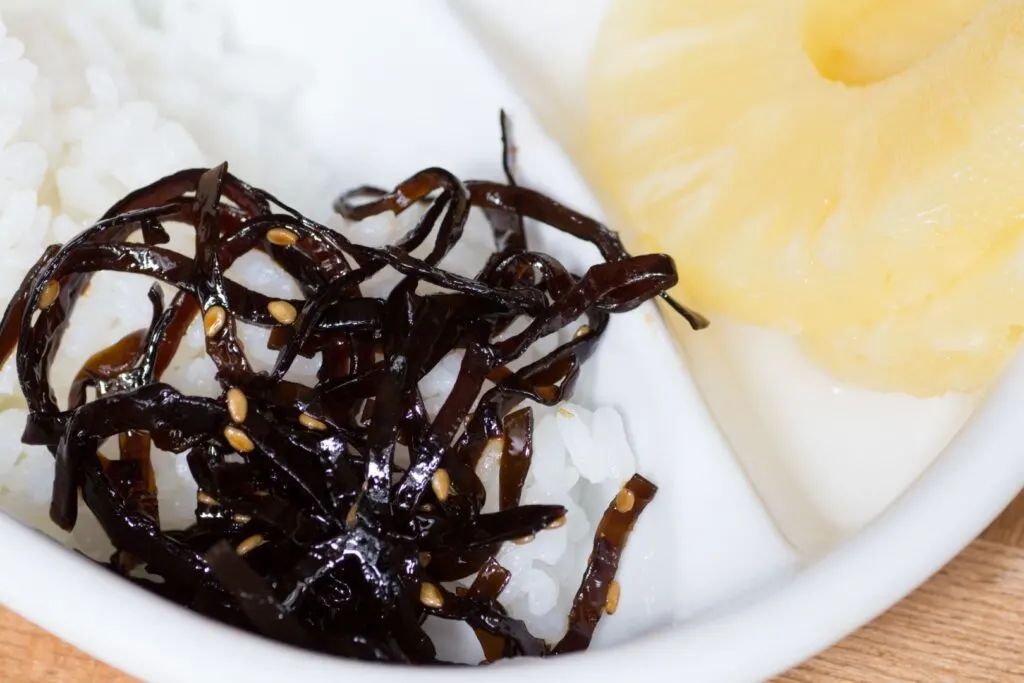
Wakame
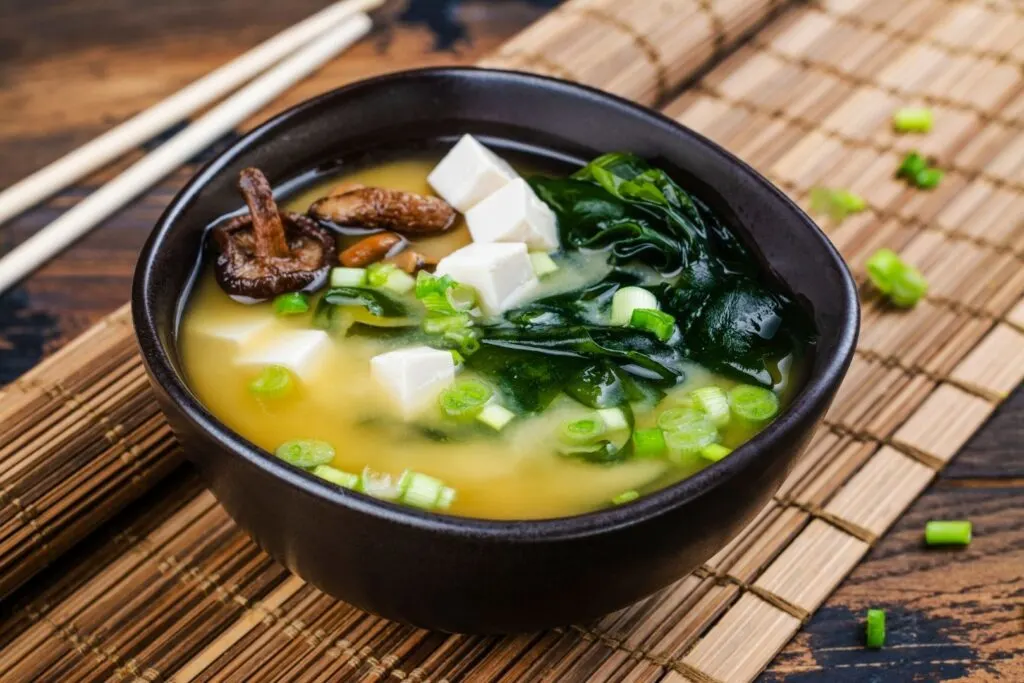
Type of Japanese seaweed: Wakame
How it’s sold: Most often dried, but sometimes raw (Nama-wakame).
How it’s prepared: Wakame is usually sold dried, so it is soaked in water to rehydrate it.
How it’s eaten: It is a very common ingredient in miso soups, it can be eaten as part of a seaweed salad, or as a su-no-mono (dish served with vinegar), such as with cucumber and octopus slices.
Hijiki
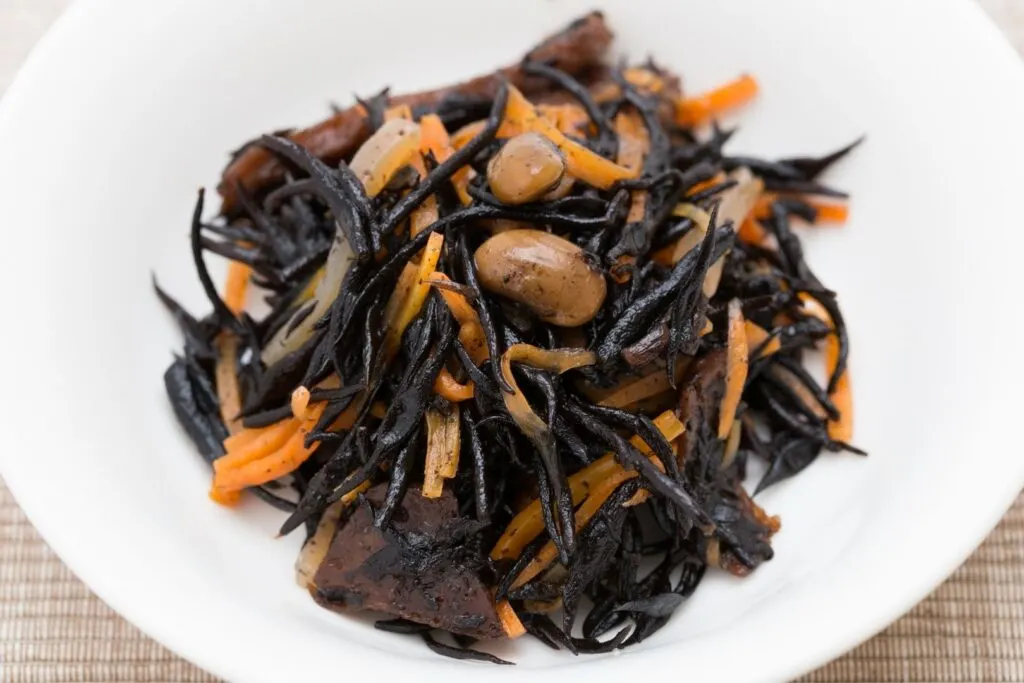
Type of Japanese seaweed: Hijiki
How it’s sold: Dried.
How it’s prepared: Hydrated then simmered in soy sauce, mirin and sugar with carrots, aburaage (deep fried tofu strips), soy beans, konyaku strips, lotus root etc.
How it’s eaten: Prepared as above and as a side dish.
Mozuku
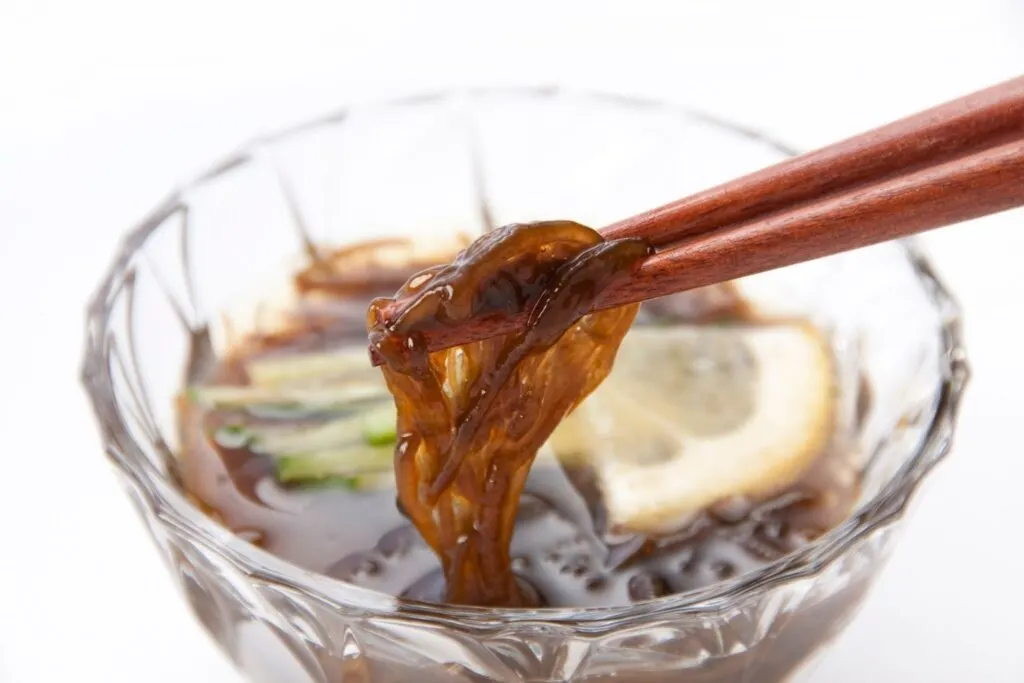
Type of Japanese seaweed: Mozuku
How it’s sold: Raw, in plastic cups, some are sold already in vinegar.
How it’s prepared: Placed in vinegar if not already, or placed in soups.
How it’s eaten: Mozuku is often eaten in vinegar as a side dish, but also can be part of soups.
Mekabu
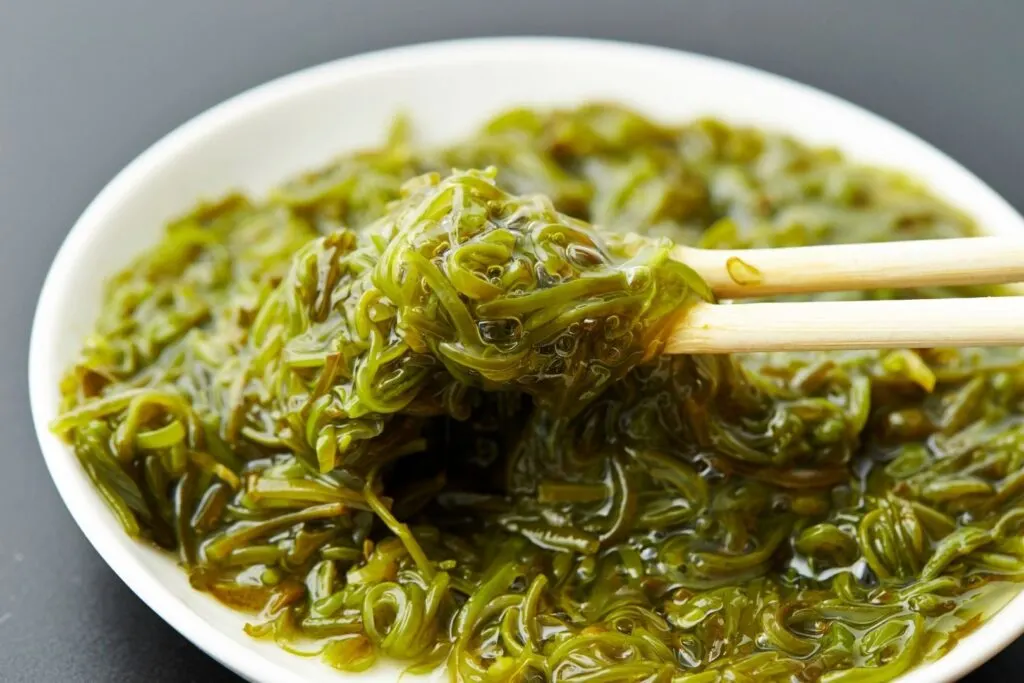
Type of Japanese seaweed: Mekabu is the soft and slimy, flowering part of wakame seaweed
How it’s sold: Raw, much like mozuku.
How it’s prepared: Placed in vinegar or ponzu as a side dish.
How it’s eaten: As a salad, sometimes with Nagaimo (Chinese yam) to enhance the slimy texture.
Umibudou
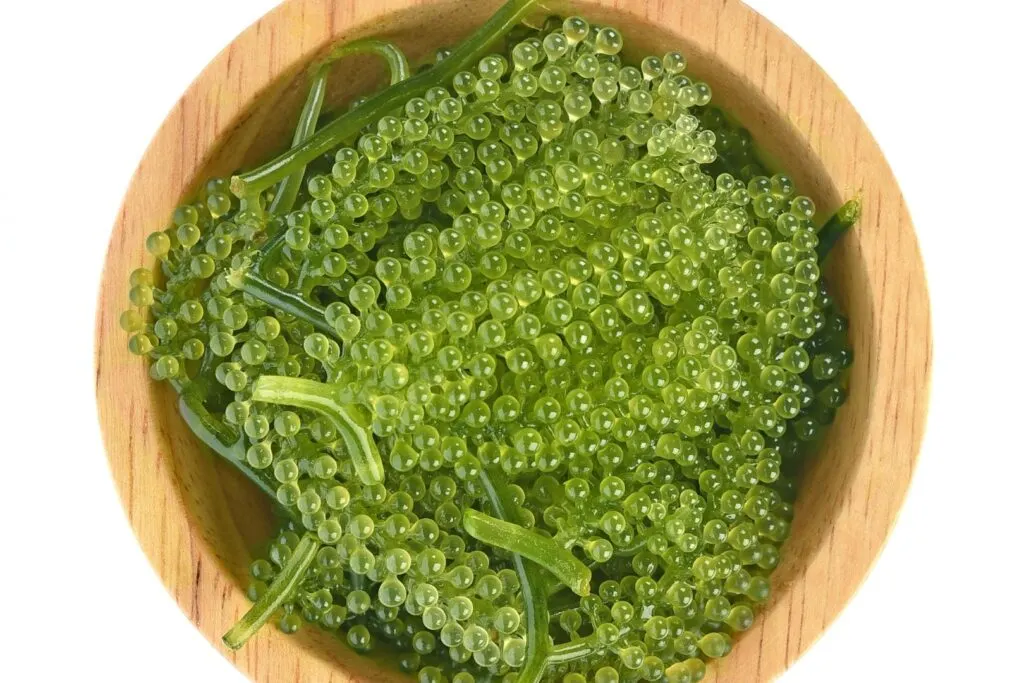
Type of Japanese seaweed: Umibudou (Umibudō), harvested in Okinawa
How it’s sold: It is rare to find umibudou at supermarkets unless you are in Okinawa where it is harvested. It is often served in izakaya (Japanese drinking establishments) sometimes accompanied with sashimi or in places that serve Okinawan food.
How it’s prepared: Washed and served raw.
How it’s eaten: Usually this is eaten raw to enjoy the little caviar-like bubbles.
Pin me for later
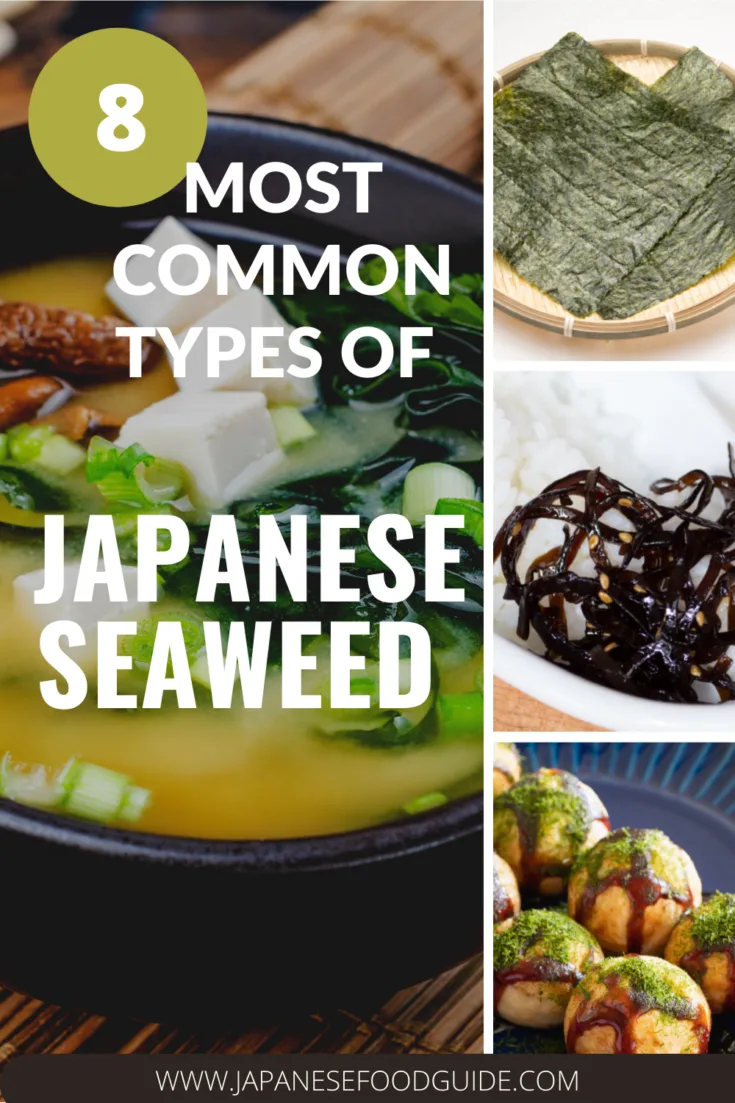
Madoka Suganuma is a freelance qualitative market researcher and a cultural insights analyst based in Tokyo with an expertise in Food & Beverages.
Having split her time between Europe and Tokyo in her formative years, Madoka is on a mission to uncover and provide insight into Japanese culture and people. Madoka enjoys learning about different cultures through food and hopes that readers can have fun learning about Japanese food culture through Japanese Food Guide.

Regina Sugayama
Wednesday 4th of January 2023
Thank you so much for this content! Cheers from Brazil!
kamala
Sunday 1st of May 2022
what is sea week konyaku?
Tanja
Thursday 2nd of December 2021
Thanks for this article, I love Japanese seaweed and most people don't realize how many different types there are! If you live outside of Japan and want to try some Japanese seaweed you can order it online from places like the Japanese Taste store.